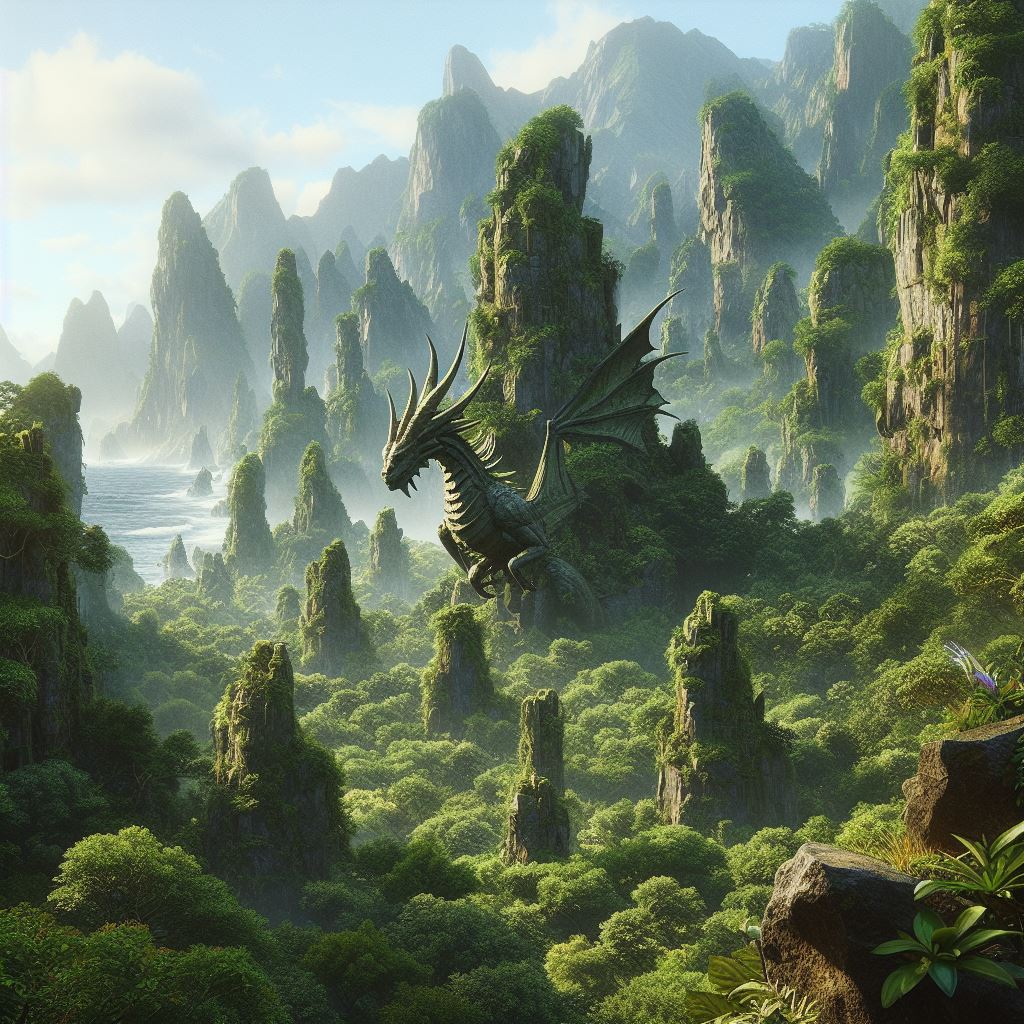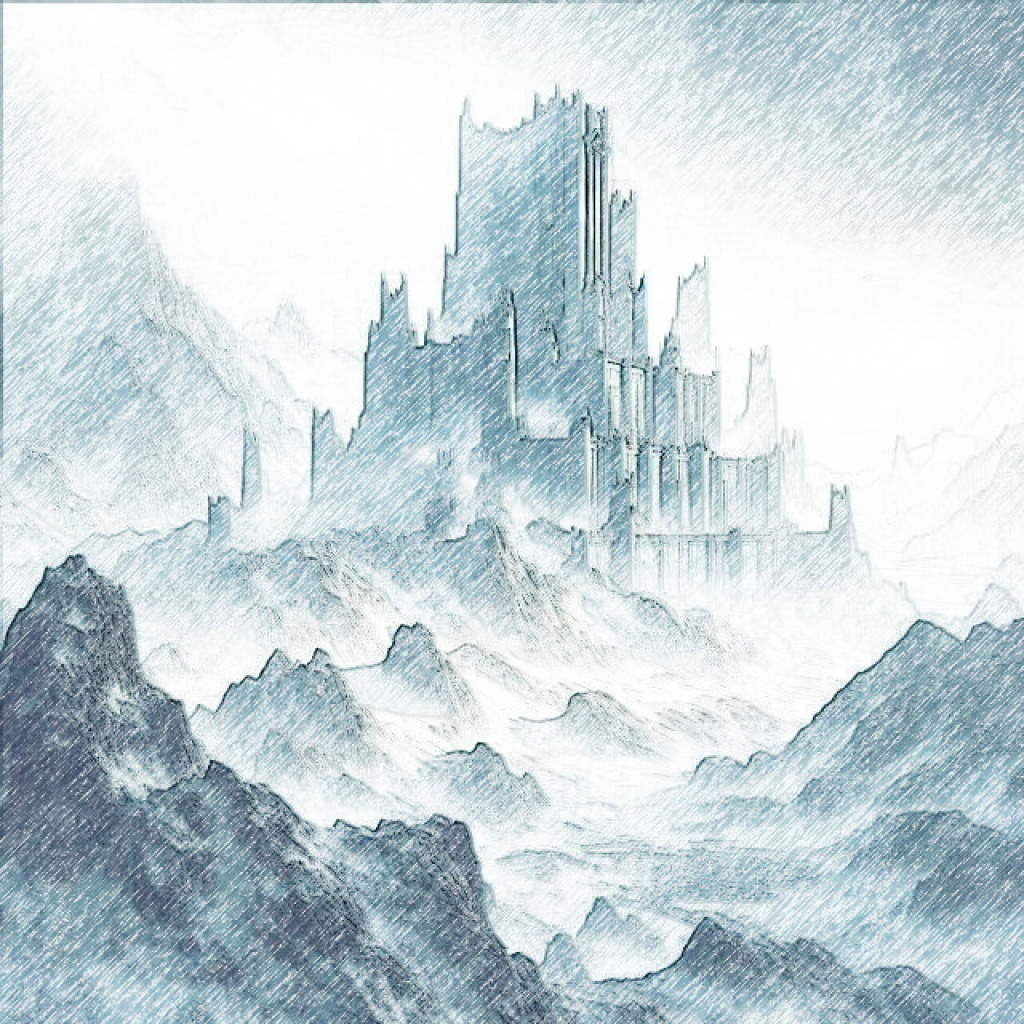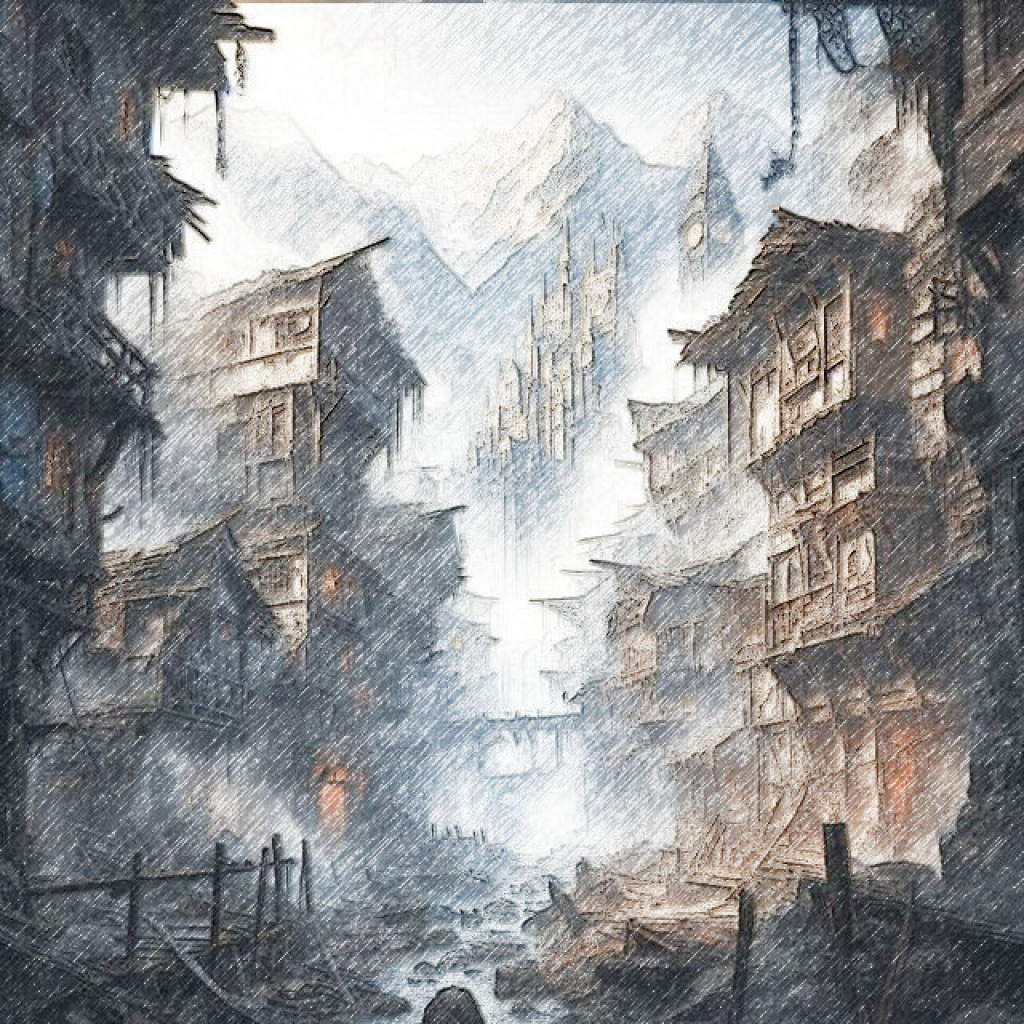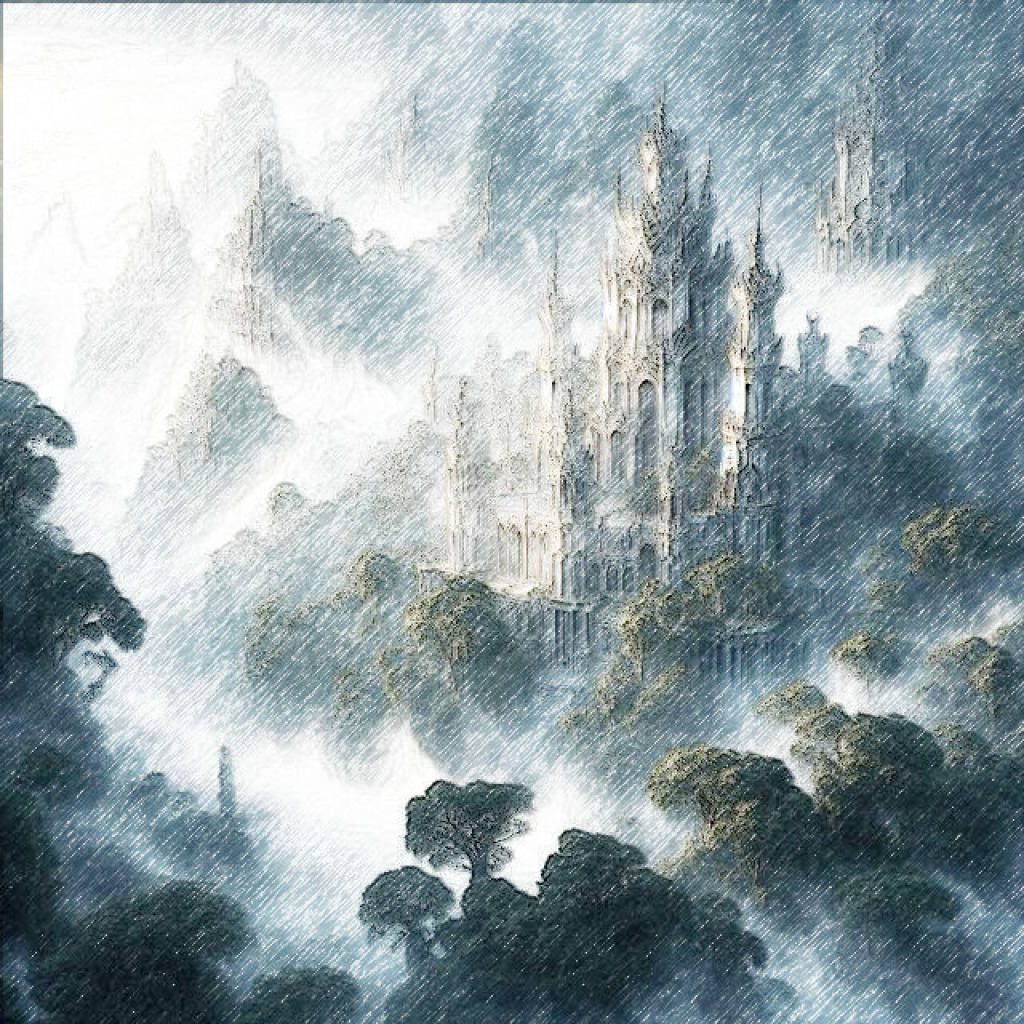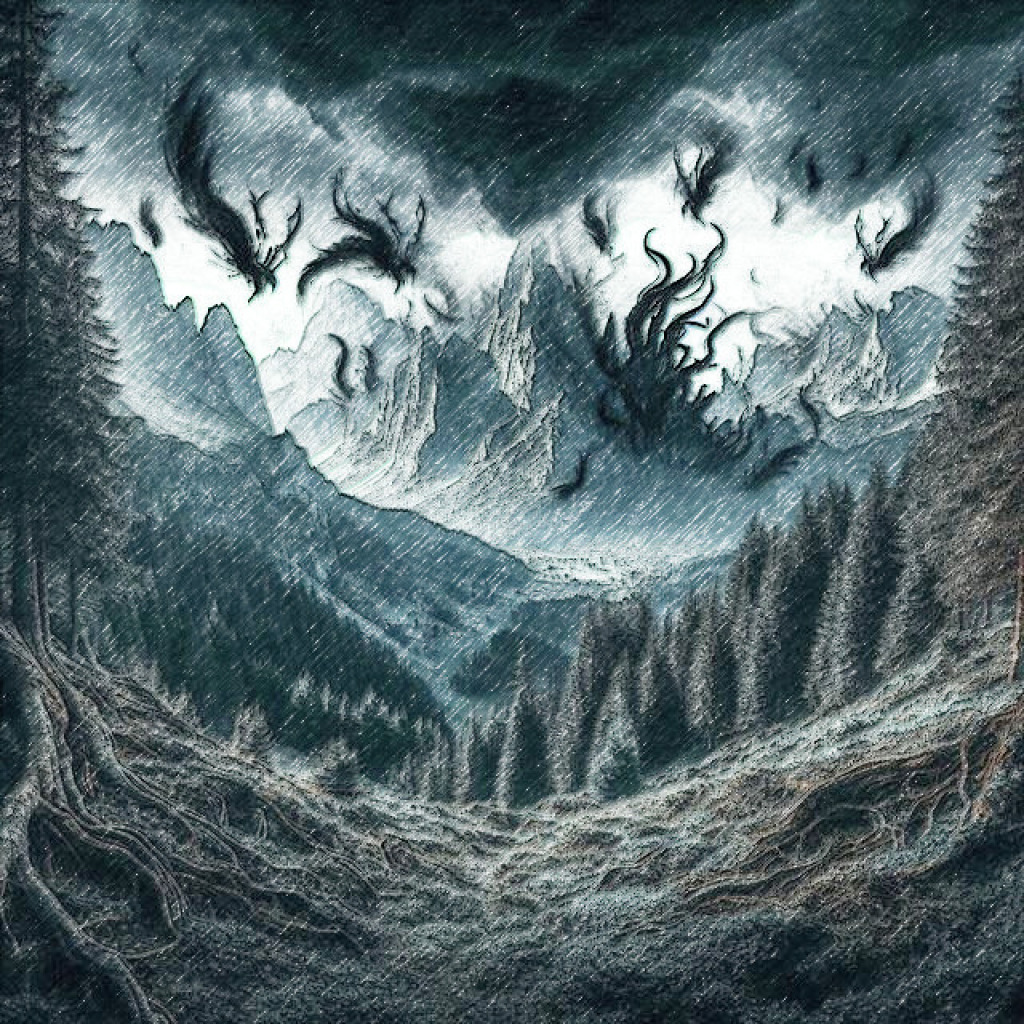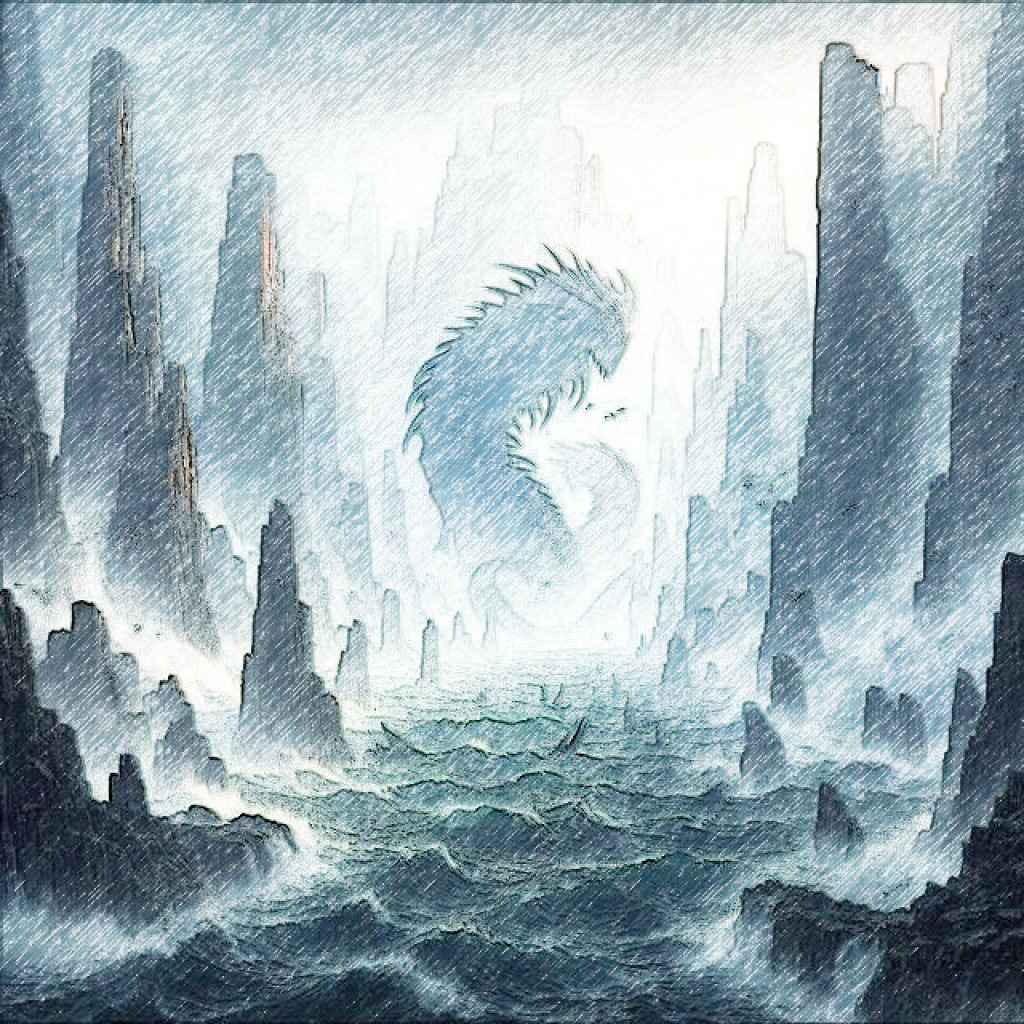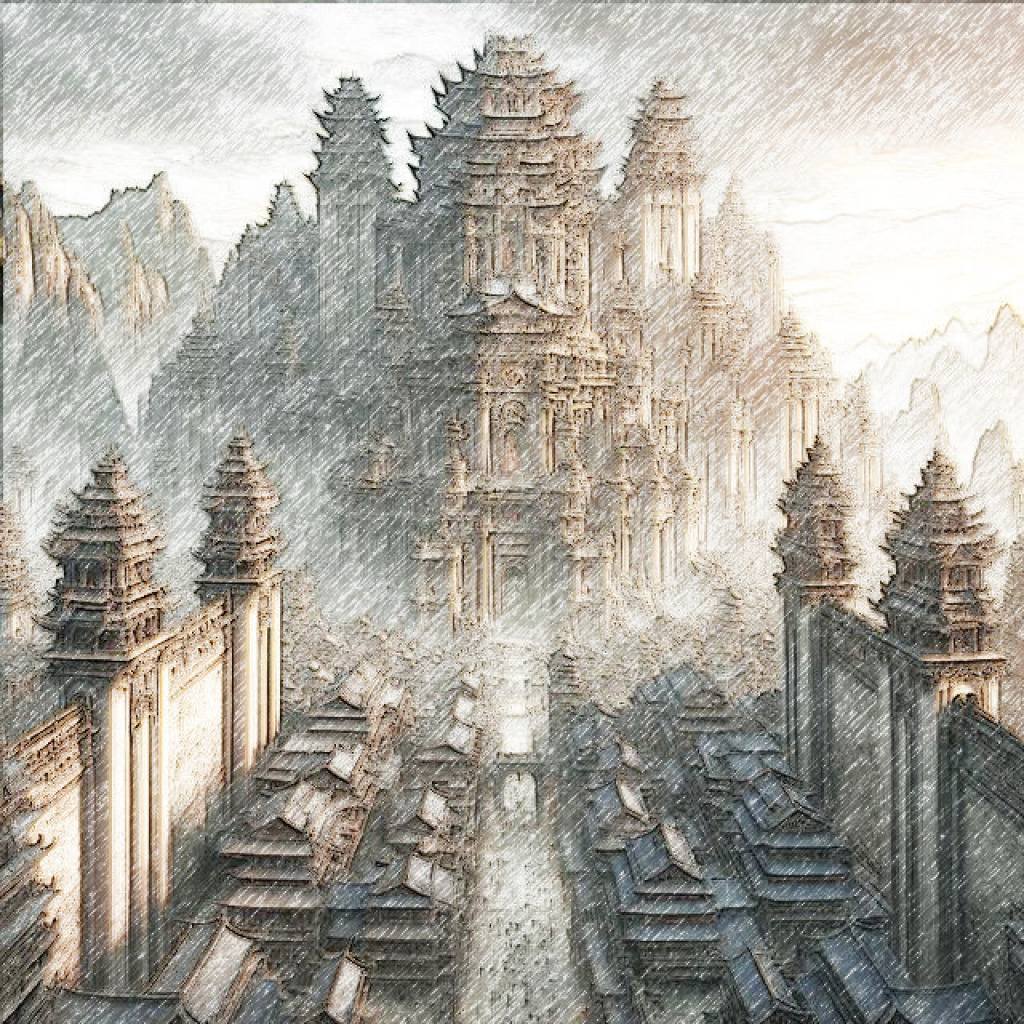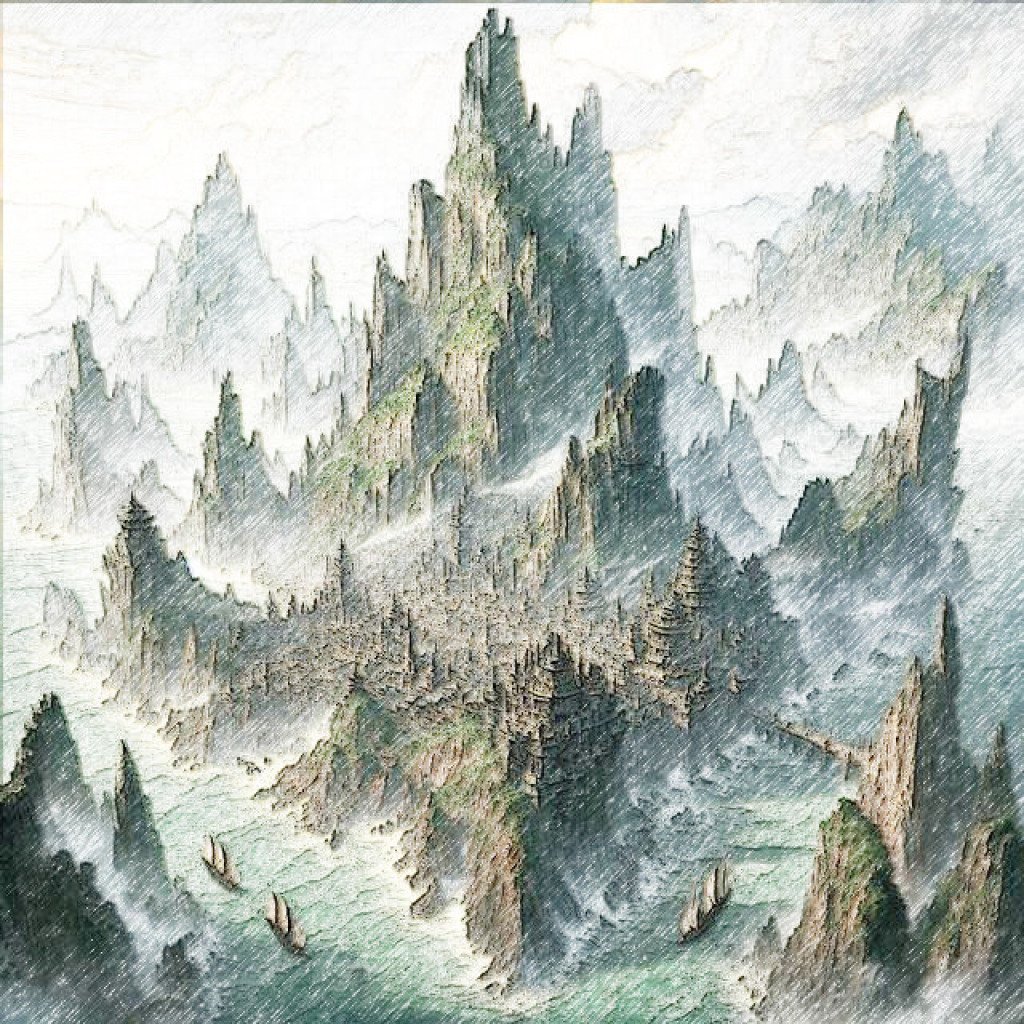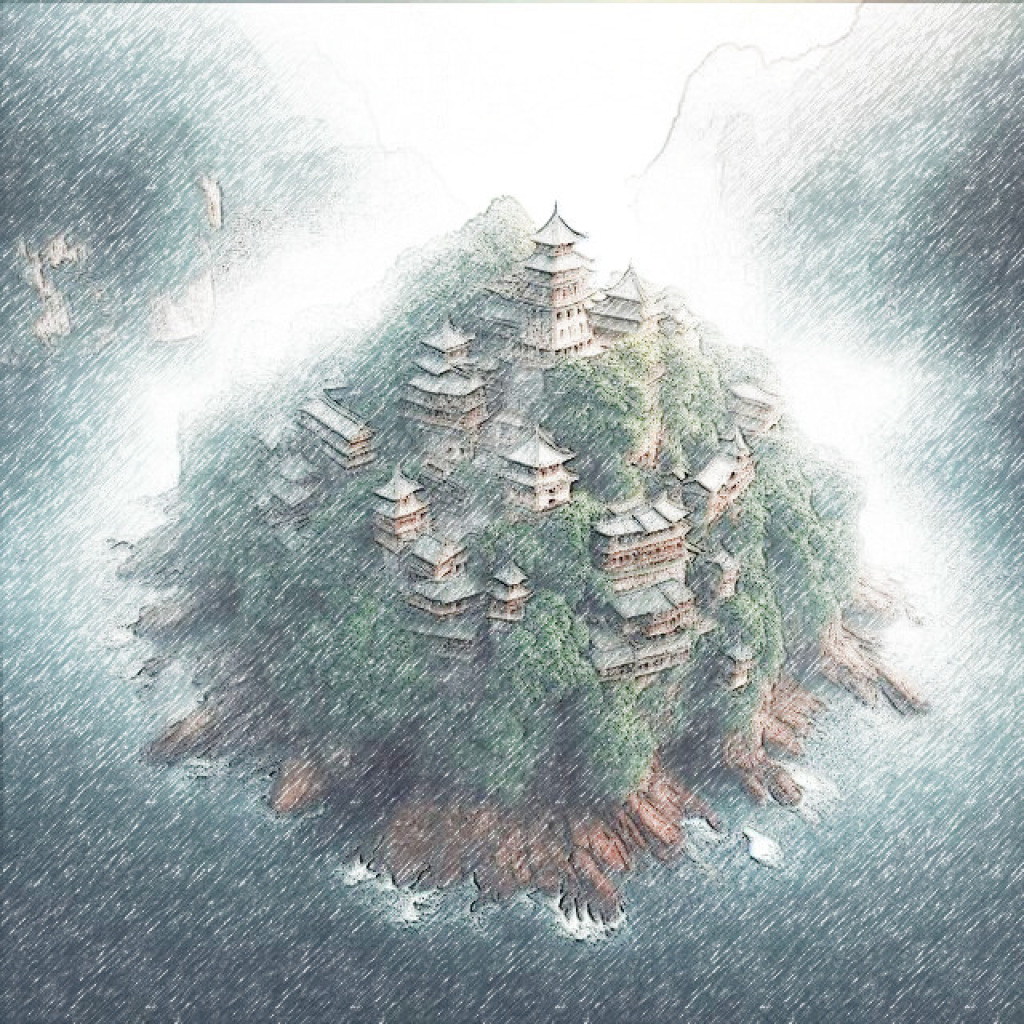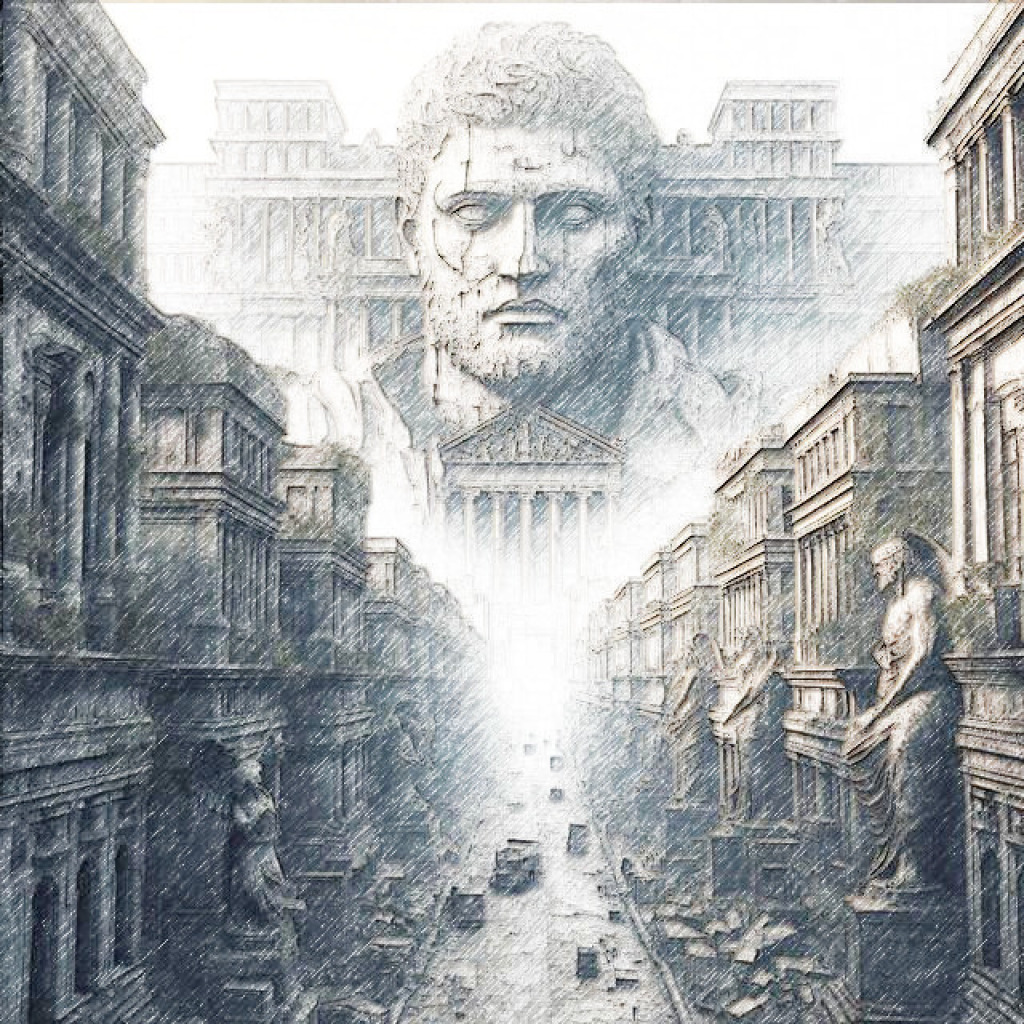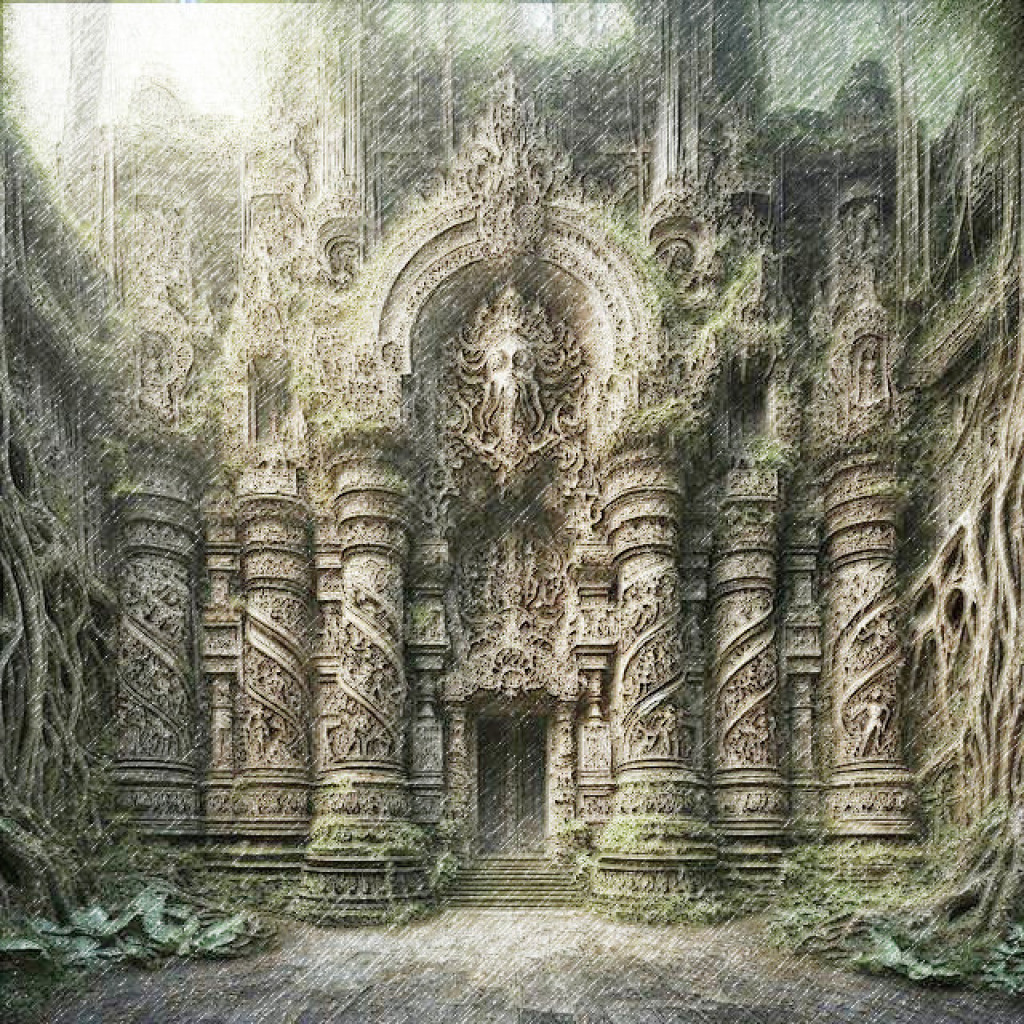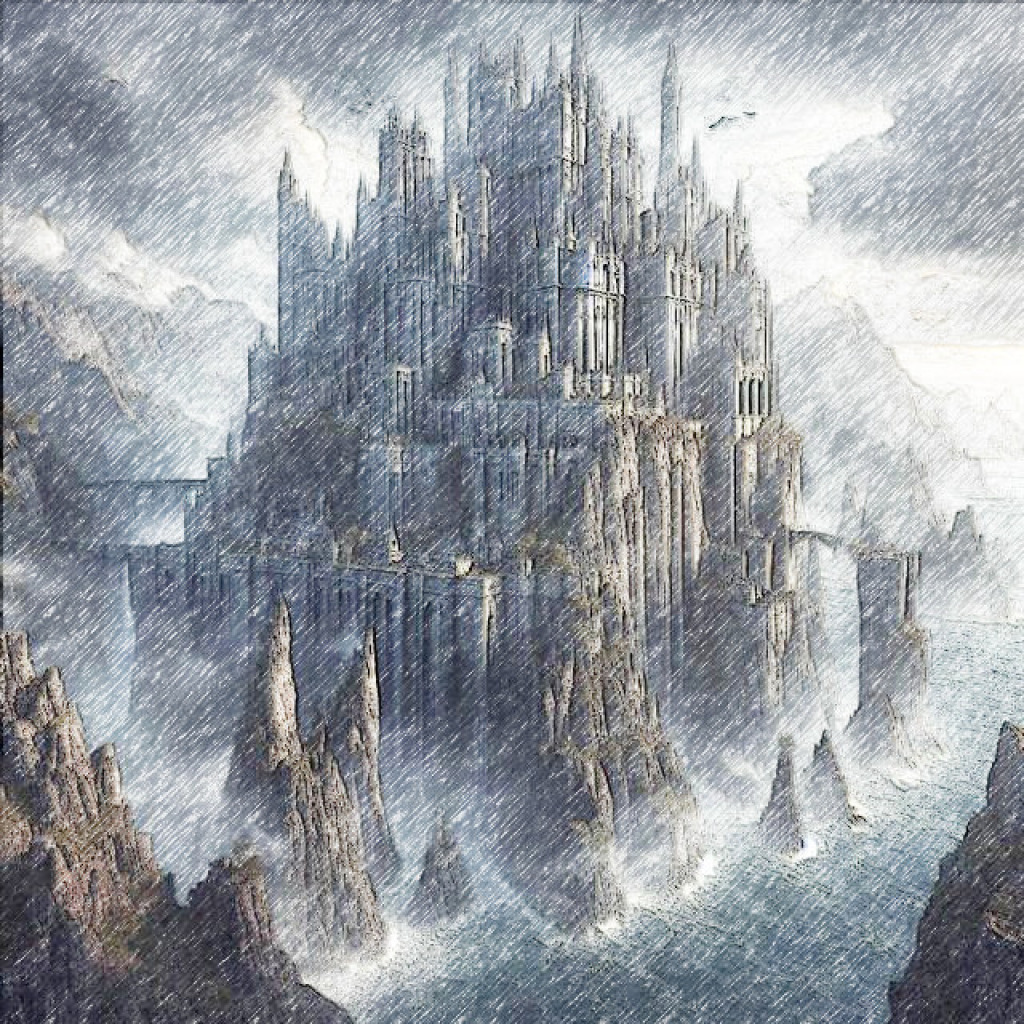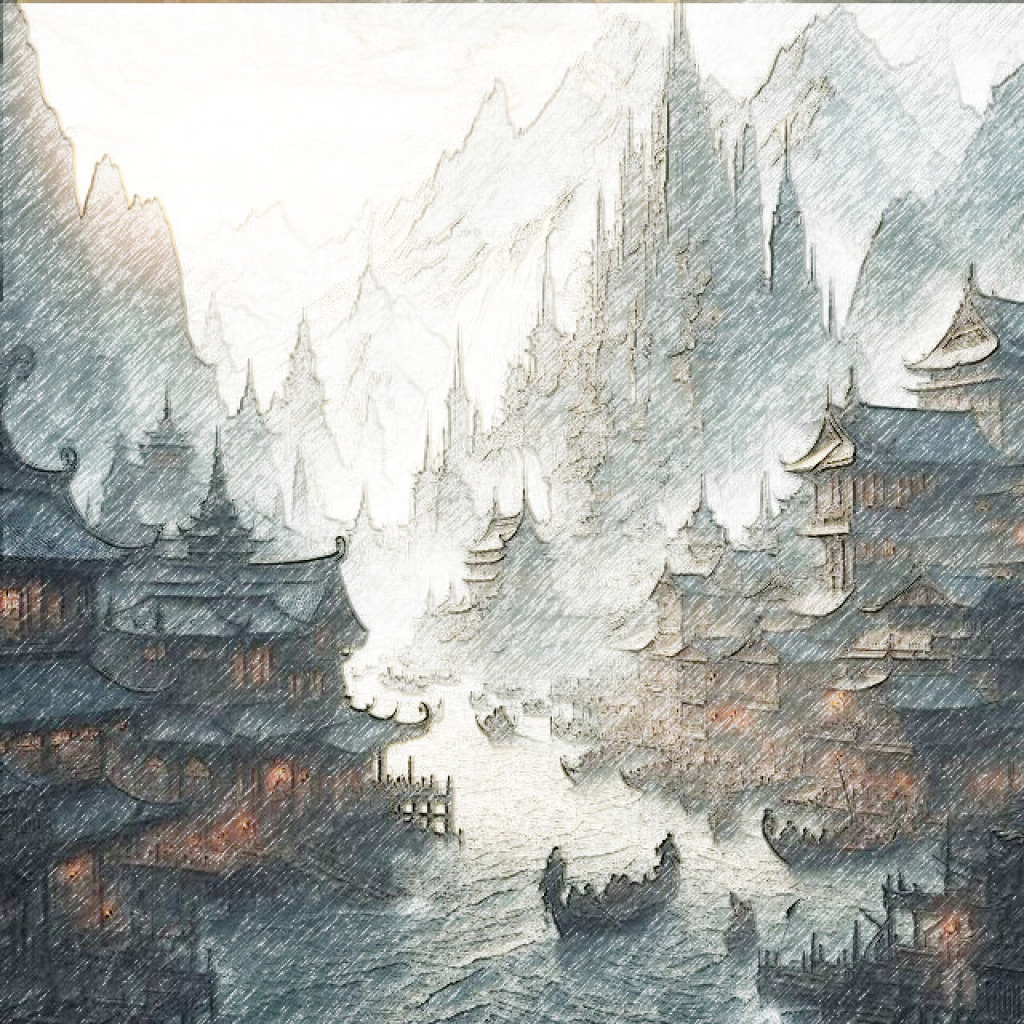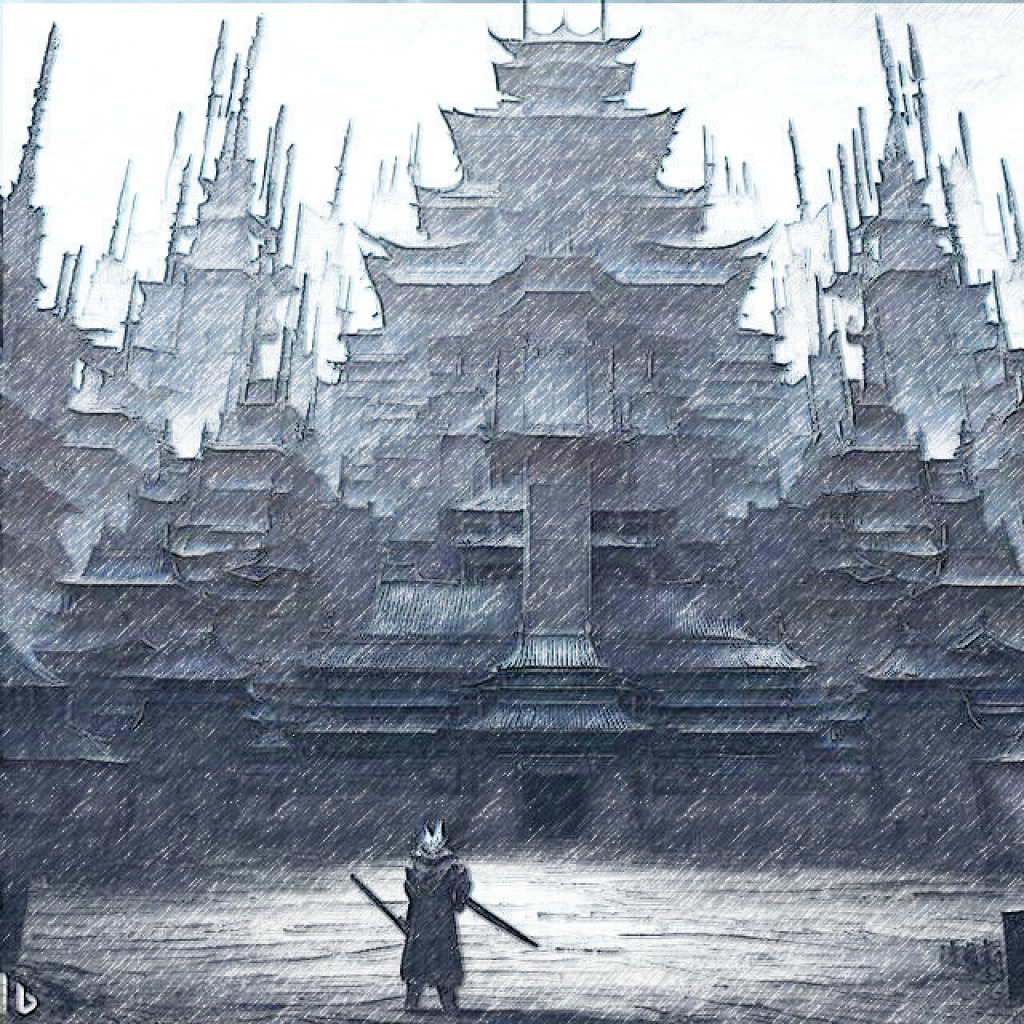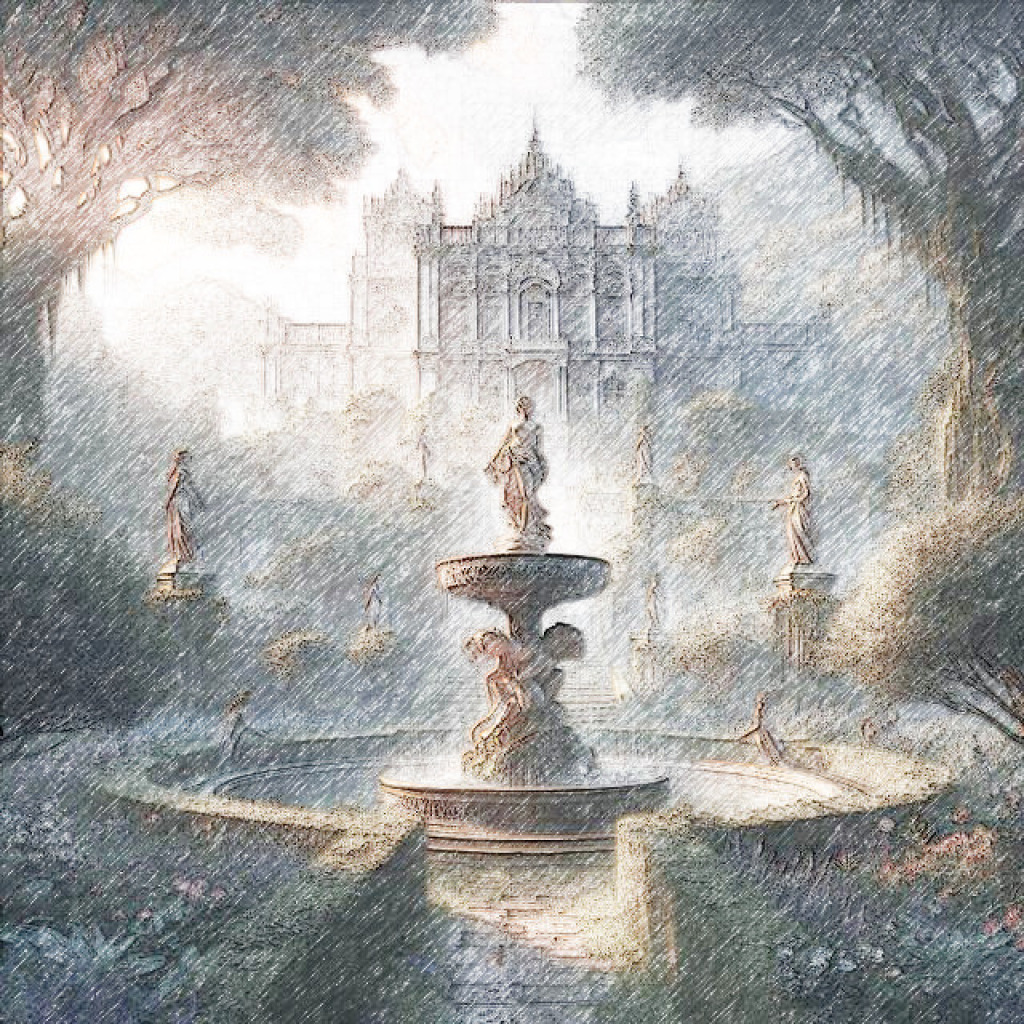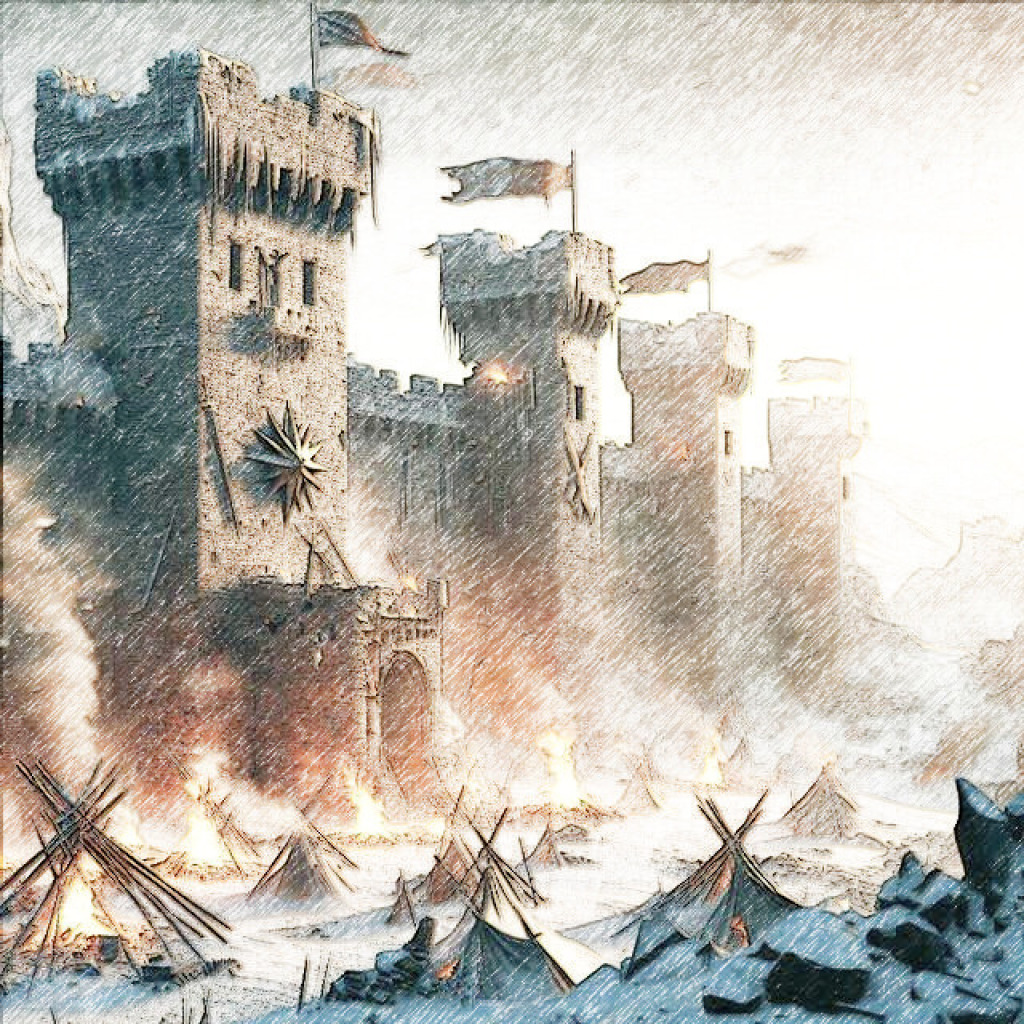The Old World
A Land as Old as The Realm
In the shadowed heart of the Forsaken Realm lies the Old World, a land steeped in ancient history, tragedy, and the remnants of long-forgotten power. Once the cradle of flourishing kingdoms and towering empires, it now teeters on the brink of collapse, scarred by both the glory of its golden ages and the lingering darkness that gnaws at its edges. Legends whisper of a time when the Old World was the seat of unmatched might, where the banners of kings flew proudly over cities of marble and stone. But those days are long past, and now only the echoes of that grandeur remain, buried beneath layers of ruin and decay.
Forsaken Factions
This sprawling continent, reminiscent of a medieval Europe cast into the depths of high and dark fantasy, is a place of stark contrasts and treacherous beauty. The land is divided into regions as diverse as they are perilous. On the war-torn shores of the Bay of Seven Kingdoms, broken armies fight for dominion over kingdoms reduced to rubble. In the frostbitten expanse of the Frozen Wastes, the bitter winds howl through desolate tundras, where ancient forces of winter still roam free, unchallenged for eons. The towering Riverspring Mountains, with their jagged peaks and treacherous cliffs, house more than just the whispers of forgotten empires—they hide the untamed fury of the earth itself, rumbling beneath the surface.Civilizations
The Norse Empire
Frozen Wastes
Amidst the frigid northern reaches of the Old World, the Norse Empire looms like a grim sentinel over the frozen wastelands. Its towering fortress, carved from the very stone of the icy mountains, stretches across the bleak landscape, the fortress walls glinting faintly beneath the pale, lifeless glow of the winter sun. The air is harsh and biting, each gust of wind carrying with it the bone-chilling cold of the Frozen Wastes, as distant howls echo ominously through the snow-choked mountain passes.
Atop the battlements, banners emblazoned with the sigil of a snow-capped mountain flutter defiantly in the freezing wind. The empire’s fortifications, stark and unyielding, stand as a reminder of the Norse people's harsh and unforgiving nature, shaped by centuries of struggle against both the land and the gods. Below, rugged warriors clad in fur-lined armor guard the gates with cold vigilance. Their faces, weathered by countless winters, are etched with the same stoic determination as the stone they defend. The sight of their breath hanging in the icy air is a fleeting warmth in a realm dominated by cold and steel.
These soldiers, the iron heart of the Norse Empire, check the documents of travelers brave—or foolish—enough to seek entry into this unforgiving land. Few pass through the gates without scrutiny, for the empire tolerates no weakness and trusts no outsider. Behind them, the vast tundra stretches endlessly, a desolate expanse where only the strong endure, and where even the gods themselves seem to have turned their gaze elsewhere, leaving the Norse to carve their fate from the frozen earth.
The Dwarven Province
Riverspring Mountains
In the shadow of the Riverspring Mountains, the once-proud Dwarven Province has fallen into squalor, a crumbling reflection of its former glory. What was once a bastion of craftsmanship and ingenuity is now a maze of narrow, grimy alleyways and decaying buildings. Rusted metal signs creak ominously from their weathered hinges, swinging precariously above streets littered with debris. The air hangs thick with the mingled stench of stale ale, sweat, and the damp, earthy musk of ancient stone. A heavy, suffocating fog of despair clings to the province, where prosperity has long since given way to ruin.
At the heart of the slums, a towering statue of a once-revered dwarven hero looms, though time has not been kind to it. The stone figure, missing an arm and defaced with graffiti, now stands as a grim reminder of a forgotten age, its proud gaze marred by neglect. The fallen hero’s likeness, now little more than a symbol of mockery, watches over the province's decline like a ghost of the past that refuses to fade.
Amidst the chaos, a grizzled dwarf, scarred and missing several fingers, toils in the mud, dismantling a broken cart with the expert precision only a dwarf could possess. His muttered curses echo through the alley, each word a testament to his bitterness and the slow decay of the once-great province. Yet, even in his disrepair, the spark of dwarven resilience clings to him, as it does to all who still call this place home. The Dwarven Province may be rotting from within, but its people endure, hardened by the world’s cruelty, crafting whatever meager existence they can from the remnants of a lost age.
The Elven Empire of Mistwood
Riverspring Mountains
Shrouded in eternal mist, the Elven Empire of Mistwood lies hidden beneath the dense canopy of an ancient forest, where time itself seems to bend and blur. The grand marble towers of elven craftsmanship rise above the fog, their pearlescent surfaces barely visible through the ever-present haze. Intertwined with the living forest, the empire’s sprawling gardens stretch endlessly, their ethereal beauty cloaked in an air of mystery. The trees themselves seem to hum with life, ancient beyond measure, their roots woven deep into the magic that binds the elven realm.
Soft, haunting melodies float on the mist, the notes too distant to grasp fully, yet close enough to stir an eerie, otherworldly charm. The music drifts through the air like a lingering memory, immersing the surroundings in a dream-like reverie that seems both inviting and unnerving. As you wander the winding streets of the empire, the soft glow of floating lanterns illuminates your path, casting an iridescent light that flickers like the fading remnants of a forgotten age. The lanterns hover just above the ground, lighting the way with an almost spectral radiance, as if they too are a part of the magic that clings to this land.
Among the mist, a group of elven artisans can be seen, their delicate hands weaving intricate tapestries of vibrant color and untold history. Their fingers move with fluid grace, but their faces remain impassive, their expressions distant as though they are lost in a world beyond the one they work in. Whispers pass between them—tales of times
The Moor of Bagdur
Riverspring Mountains
The Moor of Bagdur stands as a grim testament to one of the darkest chapters in the Old World's history, a scar upon the land left by the Forsaking—when the gods severed their ties to this plane, plunging the realm into chaos. What followed was a cataclysmic war, as nations and races turned on each other, driven by suspicion, betrayal, and the thirst for power in a world suddenly devoid of divine guidance. The Moor, once a fertile plain, became the stage for the greatest of these tragedies.
Here, the raw, untamed use of primitive spellcraft led to disaster. In a desperate attempt to outmaneuver their enemies, both dwarven and elven forces unleashed unstable magic that tore the very fabric of reality. Mana, the lifeblood of all magical forces, became corrupted, spiraling out of control and creating a catastrophic anomaly that devoured the battlefield. In the span of moments, the ground shattered, and a tidal wave of arcane destruction swept across the land, wiping out entire armies in a flash of searing light and void. Over a million souls—dwarves and elves alike—were claimed by this event, their bodies buried beneath the blackened earth, and their spirits, it is said, still haunt the moors to this day.
The land itself is cursed, a barren wasteland where nothing grows, and no living creature dares linger. A permanent fog clings to the Moor, thick and suffocating, as though the very air mourns the lives lost here. Few dare to speak of the tragedy in the surrounding regions, especially in the Riverspring Mountains, where it is considered taboo to even mention Bagdur’s name.
The Bay of the Beast
Bay of the Beast
The Bay of the Beast is a vast, treacherous expanse of water, encircled by jagged cliffs and treacherous rock formations that rise like fangs from the depths. The air is thick with the constant roar of crashing waves that echo ominously against the towering cliffs, as if the sea itself hungers for those who dare to venture too close. A perpetual mist clings to the bay, heavy with the scent of salt and decay, leaving everything slightly damp and the taste of brine lingering bitterly on the lips. There is a weight to the air here, as if the bay holds its breath, waiting.
At the center of these restless waters, a massive serpent—known only in whispered legend as the Beast—emerges from the deep. Its shimmering scales, a shifting mosaic of emerald and sapphire, catch what little light breaks through the mist, casting an eerie glow over the bay. The creature’s sleek, sinuous body undulates with a deadly grace just beneath the surface, each movement stirring the waves in a slow, ominous rhythm. Though its full size remains a mystery, the glimpses of its coiling form are enough to strike fear into the hearts of those who dare to lay eyes on it.
On a weathered pier that juts precariously over the bay, a group of fishermen huddle together, their faces drawn with worry. They speak in hushed tones, casting furtive glances out over the water, sharing rumors of the serpent’s recent activity. Some swear it has grown bolder, rising from the depths more frequently, its shadow seen even in the daylight hours—a grim omen for all who sail these waters. The bay, once a reliable source of trade and livelihood, has become a place of dread, where even seasoned sailors refuse to set sail without first offering a prayer to gods who may no longer listen.
The Phoenix Dynasty
The Desolate Desert
The colossal city of the Phoenix Dynasty sprawls endlessly across the horizon, its towering walls of stone and iron rising like an impregnable fortress beneath the ever-shifting skies. The city’s grandeur is as intimidating as it is awe-inspiring, a relic of a once-mighty empire that has endured through ages of turmoil and conquest. Within these towering defenses, the streets are a labyrinth of marble and cobblestone, winding their way through districts marked by extravagant mansions, ornate temples, and ancient monuments that tell tales of a civilization steeped in magic and mystery. The very air hums with arcane energy, wisps of magic crackling in the atmosphere, casting a faint, otherworldly glow over the city’s denizens.
At the heart of the city lies the Grand Plaza, an expansive open space where the pulse of the Phoenix Dynasty is most strongly felt. The plaza is dominated by a towering statue of a legendary phoenix, its wings outstretched in eternal triumph, flames of magic swirling around its form. The statue, a symbol of the empire's resilience and ability to rise from the ashes of destruction, glows faintly with ancient enchantments, casting long shadows over the crowds below. Beneath the statue’s watchful gaze, life teems: merchants peddle their wares, noble families stroll through the streets, and priests offer silent prayers to forgotten gods.
Yet, beneath the city’s polished surface, there is a darker undercurrent, one of power, manipulation, and dangerous ambition. The magical energy that crackles through the streets is not a mere marvel of the Phoenix Dynasty—it is also a weapon, a force that can be wielded for great reward or devastating consequence. Magic, though wondrous, is a double-edged sword here, and those who cannot control it find themselves at the mercy of the city’s many dangers.
Dragon Island
Ancient Archipelagos
Dragon Island rises like a shadow from the tumultuous seas of the Forsaken Realm, its jagged cliffs and towering peaks cutting into the sky like the bones of a forgotten god. This island, once a center of draconic civilization, is now a land of mystery and ruin, where the last descendants of the ancient dragons—the Dragonborn—continue their ancestors’ legacy amidst a land scarred by time. Steeped in elemental magic, the island is a dangerous and beautiful sanctuary, haunted by the memory of the dragons' final sacrifice during the Fracturing, the cataclysmic event that shattered the world and sealed away the demonic forces that sought to consume it.
The Dragonborn, with their scaled bodies, glowing eyes, and imposing horns, walk this sacred land with the weight of their bloodline pressing heavily upon them. Each breath they take is a reminder of the dragons’ ultimate act of defiance, their ancestors’ souls lingering in the very soil and stone of the island. Despite their divided factions, every Dragonborn feels the unspoken pull of duty: to protect the island, preserve the draconic legacy, and ensure that the demonic forces remain imprisoned beyond the Demon Wastes. Yet, beneath this sense of honor, there is a constant tension—political rivalries, ambitions, and the ever-present threat of the island’s own slow decay.
The Dragonborn Factions
Dragonborn society is divided into three primary factions, each representing different aspects of their draconic heritage.A Land Bound by Magic and Memory
Dragon Island itself is a place where the past weighs heavily on the present. The island is strewn with the ruins of long-lost draconic temples and crumbling towers, silent witnesses to a time when dragons soared through the skies and their magic flowed freely. Now, the remnants of this power flicker and fade, and the once-mighty civilization that flourished here has left behind only scattered relics. The land pulses with wild, untamed magic, much of it tied to the elements that the dragons themselves mastered. In certain places, the dragons’ essence still lingers—echoes of their presence felt in the gust of a sudden wind or the roar of a distant thunderstorm. But this magic is dangerous, and those who seek to harness it often find themselves consumed by its primal force. The island's beauty is tempered by this danger, a constant reminder that power, even ancient power, is not without cost. The Dragonborn, as the last living legacy of the dragons, walk the line between reverence and fear. They know that the island’s magic is their greatest strength, but also their greatest threat. They must safeguard this power, not only from the growing threats of the outside world but from the very island itself, which seems to be slowly succumbing to the same decay that has overtaken the rest of the Forsaken Realm.The Fractured World Beyond
Though Dragon Island remains isolated, the Dragonborn are not blind to the dangers that lurk beyond their shores. The Fracturing left the entire Forsaken Realm scarred, and while the Demon Wastes remain contained, the ancient seals that hold back the demonic forces grow weaker with each passing year. The Dragonborn, ever vigilant, know that it is only a matter of time before the demons rise again. Many Dragonborn venture beyond the safety of the island, serving as emissaries, warriors, and scholars in the wider world. They carry with them the weight of their ancestry, knowing that their every action reflects the legacy of the dragons who gave their lives to protect the Realm. Yet, even as they seek to protect the world from the demons, the Dragonborn must also guard against the internal strife that threatens to tear Dragon Island apart. For all their pride, the Dragonborn are not immune to the same forces of decay that ravage the rest of the Realm. Political rivalries, hidden ambitions, and the island’s slowly unraveling magic weigh heavily on them. As the future grows uncertain, Dragon Island stands on the brink of its own reckoning—a land of power, magic, and memory, where the legacy of the dragons may yet save or doom them all.The Heaven Sect
Isle Beyond the Ancient Forest
East of the Ancient Forests, across a narrow stretch of mist-covered sea, lies an island few dare to visit. Perched upon this island’s highest cliffs stands the Heaven Sect, a once-glorious temple that now bears the weight of centuries. It is said that the temple was erected in the days when gods still walked the earth, a sanctuary where mortals could seek the wisdom of higher powers. Now, it is a solemn relic of that forgotten time, a place where the echoes of ancient divinity linger but grow fainter with each passing year.
The temple’s towering marble columns, though cracked and worn, still stretch proudly toward the heavens, etched with intricate golden designs that catch the light of the setting sun. Though the grandeur of its façade remains, time has dimmed its brilliance, and vines creep up its sides, as though nature itself seeks to reclaim this forgotten place. Beneath the surface beauty, there is a sense of something lurking, a quiet power that has not fully faded.
Inside the temple, the air is thick with the scent of incense, heavy and rich, mingled with the salty tang of the sea. The soft, rhythmic chants of the monks who still serve here fill the cavernous halls, though their numbers have dwindled over the ages. At the heart of the temple, a crystal-clear pool of water stretches out, surrounded by smooth stone, its surface dotted with luminous lotus flowers that cast a soft, ethereal glow across the space. These flowers, it is whispered, bloom only under the gaze of the old gods, who have long since turned away from the world.
A Place of Fading Grace
Once a bastion of light and knowledge, the Heaven Sect now feels like a shadow of its former self. Though it retains much of its beauty, there is a haunting stillness to the temple, as though the island it rests upon has been forgotten by time. The temple is revered by those who dwell in the Old World, but most regard it with a mixture of awe and fear. The journey to the island is perilous, and some claim that it is cursed—those who stay too long begin to hear whispers, as though the old gods, or something darker, still watch over the place. The waters surrounding the island are unnervingly calm, often blanketed in a thick fog that hides the isle from view. Sailors tell of a strange, almost magnetic pull that the island exerts, drawing in the desperate and the curious alike. Yet many who venture across the waters to seek the priestess's wisdom do not return, leading to tales of a hidden danger that lurks beneath the temple’s serene surface.Legends and Secrets
Though the Heaven Sect is a place of pilgrimage, few truly understand its origins. Some scholars believe that it was once the seat of an ancient, god-fearing kingdom, a place where kings and priests would come to seek the favor of higher powers. Others whisper darker tales—that the temple was built atop a place of power, where old gods or something far older were bound long ago, and that the lotus flowers in the pool are not signs of life, but of the lingering presence of something that refuses to die. The Heaven Sect draws adventurers, scholars, and mystics from across the Forsaken Realm, all seeking to uncover the secrets it holds. But the land and its gods have long since moved on, and what remains may be a trap for the unwary—an ancient power waiting for the right moment to resurface.Vatican City
Bay of Seven Kingdoms
On a rocky peninsula jutting into the storm-tossed waters of the Bay of Seven Kingdoms stands Vatican City, the sacred seat of the 13 gods and the last remaining stronghold of divine power in a world slipping further into ruin. Once the heart of spiritual authority in the Old World, the city still rises with defiant grandeur, its towering marble structures visible from across the bay, where broken armies clash over the shattered remains of forgotten empires.
While much of the bay is marred by war and destruction, Vatican City remains an island of solemnity, though it too bears the scars of time. The massive Temple of The 13, situated at the city’s center, is the focal point of this sprawling, once-prosperous metropolis. Its towering spires, still piercing the sky, cast long shadows over the land as both a reminder of past glory and a warning of the fading power that lingers within its walls.
Intricate stained glass windows line the temple's towering walls, their images of divine miracles and the stories of the 13 gods still breathtaking, though many are fractured, with panes missing or cracked. These windows, now half-ruined, cast rays of colored light onto the polished stone floors, where pilgrims still kneel in prayer, though their numbers dwindle as faith in the gods wanes.
The Temple of The 13
At the heart of Vatican City lies the Temple of The 13, a monumental structure that has stood for millennia, dedicated to the pantheon of gods that once ruled the Old World. The temple’s façade, though cracked andA City of Contradictions
Vatican City, though still revered, is a place of stark contradictions. The streets that lead to the temple are lined with statues of the 13 gods, though many have been damaged or defaced over the years. Their stone faces, once proud and commanding, now look down upon the dwindling faithful with cracked features, their eyes hollow and their hands outstretched as if pleading for recognition. The city's plazas, once filled with bustling markets and devoted followers, are now quiet, save for the occasional passing of scholars, adventurers, or weary soldiers seeking refuge from the unending wars of the Seven Kingdoms. The ringing of the city’s ancient bells, which once echoed across the bay to signal holy days, now sound hollow and distant, barely heard above the crashing of the waves and the distant cries of battle.The Waning Faith
For centuries, Vatican City served as a beacon of divine authority, where kings and queens from the Seven Kingdoms came to seek the favor of the gods. Pilgrims traveled from across the Forsaken Realm to offer their devotion at the feet of the 13 gods, believing that the temple’s sacred power would protect the land from ruin. But now, as war rages across the kingdoms and the influence of the gods continues to fade, so too does the faith of the people. The wars that have ravaged the Bay of Seven Kingdoms have left their mark on the city. Though it remains untouched by the direct violence that has reduced entire kingdoms to rubble, the atmosphere of Vatican City feels heavy, as if even the temple itself is holding its breath, waiting for the end. Many believe that the gods have abandoned the world, leaving only their fading relics behind.A Beacon or a Tomb?
While some still come to Vatican City in search of redemption or divine favor, others whisper that the temple is more tomb than sanctuary, a place where the last vestiges of divine power are entombed, waiting to fade from existence. Scholars and priests debate whether the gods can be called back to the world or if their silence signals the end of an era. Yet, there are still those who hold on to hope, believing that within the Temple of The 13, there lies a spark of the old power, waiting to be rekindled. They say the day may come when the gods will once again rise to reclaim the world, and that Vatican City, with all its cracks and decay, will be the place where it begins. But for now, the city stands on the edge, caught between the glory of its past and the looming shadow of its future.The Divine Spirit Sect
Bay of Seven Kingdoms
Hidden deep within the lush and ancient Sacred Grove, nestled in a secluded corner of the Bay of Seven Kingdoms, lies the Divine Spirit Sect. This temple, a place of profound serenity and mysticism, is a stark contrast to the war-torn lands that surround it. Protected by the dense forest canopy and ancient magic that still lingers in the grove, the temple stands as a testament to a time when the land was at peace, and the spiritual connection to the celestial realms was strong.
The Divine Spirit Sect is an architectural marvel, its facade adorned with intricate carvings of celestial beings and long-forgotten deities, etched into the stone with painstaking detail. The towering columns that frame its entrance rise majestically from the earth, entwined with creeping vines and delicate moss, giving the temple the appearance of having grown organically from the very forest that protects it. Despite the signs of age and wear, the structure retains a sacred beauty that seems untouched by the ravages of time.
As you approach, the air grows thick with the scent of incense, carried on the breeze from unseen chambers deep within the temple. A soft, rhythmic chanting fills the air, the voices of unseen devotees blending harmoniously with the rustle of leaves and the distant sound of water trickling from the heart of the grove. These chants, whispered in the ancient tongue of the celestial beings, are said to invoke the protection of the spirits that once walked these lands.
The Sacred Pool of Celestial Waters
At the center of the temple lies a shimmering pool of iridescent water, its surface glowing faintly under the fractured light that streams in through the stained glass windows. These windows, depicting the celestial beings in their divine forms, cast shifting patterns of colored light across the stone floor, illuminating the sacred pool in a soft, ethereal glow. The water, clear and impossibly still, reflects the images from the glass as if the beings themselves are watching from beyond. It is around this pool that the most devout members of the Divine Spirit Sect gather in silent meditation, seeking communion with the celestial forces that once governed the realm. At the heart of the gathering stands the Serene Woman, a figure of deep reverence and mystery. Dressed in flowing robes of silver and white, she remains in a state of perpetual meditation, her presence imbued with a palpable sense of calm and spiritual power. Her role is both protector and conduit, believed to be the only one capable of channeling the will of the celestial beings that the sect venerates.A Place of Refuge and Power
The Sacred Grove that surrounds the Divine Spirit Sect is itself a place of great significance. The trees are ancient, their roots twisting deep into the earth, drawing from the same source of magic that sustains the temple. It is said that the grove is one of the last places in the Bay of Seven Kingdoms where the old magic still flows freely, untainted by the conflicts that have torn the kingdoms apart. This magic shields the temple from the outside world, keeping it hidden from all but those who are worthy—or desperate enough to find it. Despite its isolation, the Divine Spirit Sect has become a place of refuge for those seeking to escape the endless wars of the Bay of Seven Kingdoms. The few who manage to find their way through the dense forest and the mystical wards that guard the grove often arrive seeking healing, guidance, or the blessing of the celestial beings. But not all are welcome—only those who approach with true reverence are allowed beyond the grove's borders, for it is said that the spirits guard this place fiercely, and those who seek to exploit its power will meet a swift end.Legends of the Celestial Beings
The Divine Spirit Sect is deeply tied to the ancient myths of the Bay of Seven Kingdoms, where it is believed that the celestial beings once walked the earth, guiding the early kingdoms with wisdom and power. The temple itself was built to honor these beings, and its followers believe that the spirits of the celestial gods still linger here, watching over the faithful and offering protection to those who remain true to their teachings. However, like much of the Forsaken Realm, the connection between the mortal world and the divine has weakened over the centuries, and now the sect stands as one of the last remnants of this fading faith. While many across the kingdoms now worship the 13 gods or turn to other, more tangible sources of power, the Divine Spirit Sect holds fast to the belief that the celestial beings will one day return, ushering in a new era of peace and enlightenment. Until that day, the sect remains devoted to preserving the ancient ways, performing rituals and meditations that are said to keep the celestial connection alive.Conflict on the Horizon
Despite its peaceful appearance, the Divine Spirit Sect is not immune to the encroaching darkness that threatens the Bay of Seven Kingdoms. With war raging across the land and power-hungry factions vying for control, many fear that it is only a matter of time before the conflict reaches even this sacred place. Rumors spread that warlords and kings covet the temple’s rumored connection to divine power, believing that whoever controls the Sacred Grove might unlock untold secrets—or harness the celestial beings’ strength for their own purposes. The Serene Woman, though silent, is believed to be preparing for this inevitable conflict. Her meditations are said to grow longer and more intense, and the waters of the sacred pool glow brighter in response. Some whisper that she has foreseen the coming storm and is waiting for the right moment to act—whether to protect the temple or release the ancient power that lies within its walls.The Arcane Citadel
Bay of Seven Kingdoms
Standing like a sentinel over the Bay of Seven Kingdoms, high atop a jagged cliff where the land meets the turbulent sea, rises the Arcane Citadel—a towering fortress of grey stone, steeped in mystery and arcane power. Built in the twilight of the Old World’s greatest empires, the citadel was once the seat of the most feared and revered sorcerers, a place where arcane knowledge was hoarded and guarded with jealous intensity. Even now, with the world crumbling around it, the citadel endures, its presence both feared and coveted by those who understand the true extent of its power.
The grand entrance is marked by two massive bronze doors, each one adorned with intricately carved runes that glow faintly with the remnants of ancient enchantments. These doors are said to have been sealed by the first Archmages themselves, designed to keep out any who are unworthy or unprepared to wield the power that lies within. The walls of the citadel, though weathered by the relentless winds and the salt of the sea, remain unbroken—impervious to the wars and violence that have ravaged the lands below.
As you step inside, the air shifts, growing heavy with the scent of old books, ink, and burnt incense. The vast library that spans the length of the first floor is a repository of knowledge, its shelves stacked high with tomes of forbidden spells, ancient manuscripts, and the scrolls of long-forgotten mages. The flickering light from enchanted candles casts long shadows over the pages, and the faint hum of arcane energy resonates through the stone halls.
The Towering Sorcerer and the Crystal Orb
At the heart of the courtyard, where the inner chambers of the citadel meet, stands a massive statue of a sorcerer, his stone form draped in robes of power, his hand outstretched toward the sky. In his grasp, a glowing crystal orb pulses with arcane energy, casting an eerie light over the courtyard. The orb, imbued with the magic of the Old World’s greatest archmages, is said to contain the last vestiges of their combined power—a relic of a time when magic ruled the land, and those who wielded it shaped the fate of kingdoms. The orb pulses rhythmically, like the beating of a heart, as though alive with the power it holds. The statue itself is a testament to the Citadel’s former might, but like everything in the Forsaken Realm, it carries a sense of something long past its prime. The stone is cracked in places, and moss clings to its base, as if nature is slowly reclaiming even this bastion of arcane might. And yet, the orb still glows—still powerful—still a beacon to those who seek to unlock its secrets.Whispers of the Arcane
In a secluded corner of the courtyard, beneath the shadow of the towering sorcerer, a hooded figure sits hunched over a stone table, their form illuminated by the soft glow of arcane artifacts scattered before them. The figure’s hands move with precise, almost mechanical care as they arrange the artifacts—fragments of ancient power that few can comprehend, let alone control. Their soft murmurs of incantations fill the air, blending with the low hum of the orb and the ever-present scent of incense. This figure, like many who dwell within the Arcane Citadel, is a practitioner of magic whose identity is obscured not just by their hood, but by the weight of the knowledge they bear. Scholars, mages, and warlocks from across the Bay of Seven Kingdoms seek refuge here, drawn by the promise of forbidden lore or in search of the Citadel’s hidden secrets. But those who come often find more than they bargained for—within these walls, the pursuit of knowledge comes with great risk, and the arcane power that flows through the Citadel is as dangerous as it is alluring.A Center of Forbidden Power
The Arcane Citadel has long been a place of both fascination and fear. For centuries, the kings and queens of the Seven Kingdoms have eyed the Citadel from afar, wary of its power and the influence its inhabitants could wield. Though the Citadel has largely remained neutral in the conflicts that have torn the kingdoms apart, there are whispers of alliances with shadowy factions—deals struck in secret for knowledge or power that could tip the balance of the wars raging in the bay. The Archmages who once ruled the Citadel are long gone, but their legacy remains in the form of arcane wards and forbidden spells that still guard the highest levels of the tower. Only the most skilled and daring sorcerers are allowed to ascend the spiral staircases that lead to the upper floors, where it is said the most dangerous knowledge is stored—spells capable of raising the dead, controlling the elements, or even tearing apart the fabric of reality itself. The Citadel’s magic has kept it isolated from the devastation that surrounds it, but it is not impervious to the passage of time. Cracks have begun to form in the wards, and whispers of something dark lurking within the Citadel’s depths grow louder. Some fear that the pursuit of arcane knowledge has come at a cost too great, and that the power within the Citadel may one day be its undoing.The Citadel’s Role in the Forsaken Realm
Though its inhabitants remain focused on the study of magic, the Arcane Citadel is not entirely removed from the world beyond its walls. Many of the Seven Kingdoms have sent emissaries to the Citadel in the hopes of forging alliances, seeking arcane weapons to aid their cause in the wars that rage across the bay. Some sorcerers within the Citadel have been tempted by these offers, while others remain staunch in their belief that magic should not be used to further mortal conflict. The Bay of Seven Kingdoms, torn apart by war, sees the Arcane Citadel as both a potential threat and a possible salvation. The power locked within its stone walls could turn the tide of battle for whoever gains control of it—but at what cost? The Citadel’s neutrality has held thus far, but tensions rise as factions within the Citadel itself begin to take sides, and the temptation to wield the arcane power for personal gain grows stronger by the day. In the end, the Arcane Citadel remains a place where knowledge, danger, and ambition converge—a fortress of power in a world slipping ever further into chaos. Those who seek to control the Citadel's power must tread carefully, for the magic within is not easily bent to the will of mortals, and the consequences of failure are dire.Meerwood
Bay of Seven Kingdoms
Set at the crossroads of ancient roads, beneath the towering shadows of the Riverspring Mountains and beside the turbulent waves of the Bay of Seven Kingdoms, Meerwood stands as a city of stark contrasts. Amid the decay and desolation that plague the Forsaken Realm, Meerwood thrives, shimmering like a rare jewel in the midst of ruin. Its streets are lined with merchants, artisans, and travelers from distant lands, and its bustling markets, arcane academies, and cultural vibrancy are a testament to the resilience of civilization. Yet, beneath its vibrant exterior, lies a darker side—a place where old-world decadence meets the grim realities of modern survival, and where ambition fuels both progress and corruption.
Meerwood is a cosmopolitan hub where adventurers, traders, and mystics from every corner of the realm gather, making it a melting pot of culture, magic, and intrigue. Its dual nature as a center for commerce and a sanctuary for refugees fleeing the endless conflicts beyond its gates has made it one of the most important cities in the Forsaken Realm. But it is also a city on the edge, struggling to maintain control over the forces threatening to pull it apart from within.
The Tension of Trade and Shadow
As a vital trading port, Meerwood’s marketplaces are legendary, filled with exotic goods from the farthest reaches of the world. Spices from the southern deserts, arcane relics from fallen kingdoms, and precious jewels mined deep within the Frozen Wastes flood its stalls. The streets are alive with the clamor of deals being struck, languages blending into a constantThe Grand Fountain of Elara: Heart of the City
At the center of Meerwood lies the Grand Fountain of Elara, an ancient monument that has become a symbol of the city’s unity and spirit. The fountain is dedicated to Elara, a legendary mage and scholar revered by many in Meerwood, especially by sailors and traders who see her as a Legendary Hero. The fountain itself is a marvel of artistry and magic—a massive figure adorned in spellblade armour carved from smooth white stone, her hair flowing in intricate waves as water endlessly flys from her hands dancing like dragons before shimmering into the pool below. The water is said to carry a magical blessing, and the plaza around the fountain serves as a central gathering point for the city's citizens and visitors alike. By day, the fountain is a bustling hub of activity, with children playing by its edges, merchants selling their wares, and travelers resting their weary feet. By night, under the glow of the moon, it becomes a place of quiet reflection, where the city’s people come to toss coins into its depths, praying for luck, fortune, or perhaps just a brief respite from the burdens of the Forsaken Realm. The fountain is a reminder that, despite the growing darkness around them, Meerwood’s people still believe in hope, in unity, and in the possibility of peace.Arcane Knowledge and Power
Meerwood is not just a city of trade and diplomacy; it is also a hub for arcane study and magical research. The Arcane Tower, a towering structure near the city's core, is renowned for its open exchange of knowledge. Unlike many magical enclaves where secrets are hoarded and magic is jealously guarded, Meerwood’s scholars believe in the collective power of shared knowledge. Many refugees fleeing the destruction of the Bay of Seven Kingdoms or the war-torn realms of the Old World bring with them priceless tomes, artifacts, and knowledge, much of which finds its way to the Arcane Tower’s extensive libraries. Here, scholars and mages from across the realm gather to study and practice the arcane arts, creating an atmosphere of intellectual curiosity and magical experimentation. Meerwood’s embrace of both the old world’s magical traditions and its openness to new ideas has made it a center of innovation. Artifacts that once lay forgotten in the ruins of ancient empires are restored to their former glory, and new spells and arcane theories are developed daily. However, this wealth of magic has also attracted darker forces—rogue mages, warlocks, and cultists seeking to exploit Meerwood’s troves of arcane knowledge for their own ends.The Shadows Beneath: Meerwood's Dark Underbelly
Though Meerwood gleams with culture, knowledge, and prosperity, a dark undercurrent flows beneath its surface. The city’s strategic location and wealth make it a target for both internal and external forces. Secret societies, mercenary bands, and political factions vie for power in the shadows, using bribery, manipulation, and assassination to tip the balance in their favor. The black market that thrives under Meerwood’s streets is a haven for criminals and slavers, who traffic in stolen relics, forbidden magic, and human lives. The slave trade, in particular, is a blight on the city. Despite the best efforts of the Adventurer’s Guild and other factions dedicated to law and order, slavery remains a persistent issue, with many of the Realm’s wealthiest using their influence to protect this illicit industry. The slave trade has grown into a network of corruption that ties directly into the city’s political structure, making it almost impossible to root out completely without collapsing the very foundations of the city's delicate power balance.A City on the Edge
Despite its beauty, wealth, and influence, Meerwood is a city walking a razor’s edge. On the one hand, it represents what the Forsaken Realm could be—a place where races and cultures come together in peace, where trade and knowledge flourish, and where the horrors of the outside world seem far away. On the other, it is a city teetering on the brink of collapse, its power structures riddled with corruption, and its future uncertain. War, both from external forces and internal factions, is a constant threat, and there are whispers in the streets that Meerwood’s peace cannot last forever. Yet, for now, Meerwood remains the cosmopolitan jewel of the Forsaken Realm—a place of possibility, where dreams are born, fortunes are made, and legends are forged.The Sword Sect
Bay of Seven Kingdoms
Nestled amidst the jagged cliffs of the Riverspring Mountains, the Sword Sect stands as an imposing monument to martial discipline and the art of the blade. The fortress itself is a marvel of ancient construction, its towering spires and walls of weathered gray stone giving the impression that it has stood against the elements—and time itself—for countless ages. Its silhouette dominates the landscape, casting long shadows over the surrounding valleys, where the air is always thick with the scent of cold steel and the echo of clashing swords.
As you approach the fortress, the harsh, biting wind of the mountain carries with it the faint metallic tang of sharpened blades and the unmistakable sound of steel striking steel. The sound resonates through the air—a constant reminder of the unrelenting training and discipline that defines the Sword Sect. It is a place where warriors of every race and background come to hone their skills, seeking mastery over the blade, or perhaps redemption through it.
The Fortress: Stone and Steel
The exterior of the Sword Sect fortress is as unforgiving as the training it houses. The stone is ancient, its surface weathered and cracked in places, yet it stands strong, as if defying the elements and the passage of time. Sharp, spiky towers loom above the central keep, their tips seeminglyThe Training Grounds
Stepping inside the fortress, you are immediately greeted by the vast training courtyard, the heart of the Sword Sect. The courtyard is massive—large enough to accommodate hundreds of warriors at a time—paved with stone tiles that have long since been worn smooth by the constant movement of armored feet. Around the perimeter, training dummies and targets are arranged with precision, each one scarred from countless practice strikes. Rows of armor-clad warriors, ranging from novice trainees to battle-hardened veterans, are engaged in rigorous sparring matches. The clash of swords fills the air, mingled with the occasional grunt of effort or yells of exertion as the warriors push their bodies and minds to the limit. It is clear that every strike, every movement, is designed to hone their skill—no wasted effort, no careless blows. There is no room for hesitation in the Sword Sect, where every mistake could be fatal in real combat. The training is relentless, and overseen by none other than the legendary Master Iroh, a stern figure who commands respect from all who stand under his watch. Master Iroh, an aged orc with striking silver hair and the weathered features of someone who has spent a lifetime on the battlefield, observes the warriors' progress with a sharp, critical eye. His presence alone is enough to instill a sense of urgency and focus in the trainees. Despite his age, there is a strength and vitality to Master Iroh, as if the very mountains have lent him their endurance. Occasionally, he will bark out corrections to the students, his voice carrying over the sound of clashing steel. "Elbows in! Feet apart!" he calls out, his tone firm but not unkind. For Master Iroh, each student represents a potential swordmaster—an extension of the long and proud tradition of the Sword Sect—and it is his duty to shape them into warriors of discipline and honor.The Sect’s Philosophy: The Blade as Honor
At the heart of the Sword Sect's training is its philosophy—that the sword is not merely a weapon but an extension of the warrior's soul. To master the blade is to master oneself, to wield it with discipline and honor. The warriors of the Sword Sect are taught to respect the power they hold in their hands, and to use it only in the pursuit of justice, defense, or in cases where no other path remains. They believe in the balance between strength and restraint, and many who train here come seeking not just physical prowess, but redemption or a sense of purpose. The Sword Sect has a deep history, with legends of its founding going back to the days when the Riverspring Mountains were ruled by tyrants and warlords. It is said that the first members of the Sword Sect were warriors who laid down their weapons after overthrowing their oppressors, vowing to only take up arms again in defense of the innocent. Since then, the sect has remained a bastion of martial skill and moral integrity.The Towers of the Sword Sect
The towers that rise above the training grounds are not merely for defense—they serve as homes to specialized warrior orders within the sect, each tower dedicated to a particular style of combat or philosophy of the blade.- The Shieldbearers’ Tower is home to those who specialize in sword-and-shield combat. These warriors focus on defense and endurance, acting as stalwart protectors on the battlefield. They are often tasked with defending villages or caravans from the dangers of the Forsaken Realm.
- The Windcutters’ Tower houses those who have mastered the art of speed and agility. Known for their blinding quickness and precision strikes, the Windcutters are the sect’s answer to light skirmishers and assassins, their swords moving like lightning on the battlefield.
- The Tower of Silence is perhaps the most enigmatic. It is where the sect’s most skilled warriors, known as Blademasters, train in isolation. These individuals have perfected the art of combat to such a degree that they require no instruction—only introspection. The Tower of Silence is a place of quiet reflection, where only the most worthy ascend.
The Sect’s Reach Beyond the Fortress
Though the Sword Sect’s fortress is a self-contained realm of discipline, its influence reaches far beyond the mountains. Warriors trained at the Sword Sect are known throughout the Forsaken Realm, called upon as mercenaries, bodyguards, or champions in times of war. The sect has a network of allies and informants scattered across the Realm, ensuring they remain well-informed of any rising threats. However, the sect itself remains neutral in the political conflicts that often plague the land, preferring to uphold their ancient oath to defend the innocent rather than serve any particular kingdom or ruler. In Meerwood, the closest major city, the Sword Sect holds considerable sway. Their warriors are often hired to protect important trade routes or to guard high-ranking officials. Though the sect does not involve itself directly in Meerwood’s complex politics, their presence is always felt, and their reputation as incorruptible champions of justice makes them a force that even the city’s darker factions must respect.The Path of the Sword
For those who come to the Sword Sect, the path to becoming a true swordmaster is long and arduous. Many will spend years within the fortress’s walls, learning not only the physical skills of swordsmanship but also the mental discipline required to wield a blade with purpose. Some come seeking glory, others redemption, but all leave with a deeper understanding of what it means to be a warrior in the Forsaken Realm—a realm where darkness constantly looms, and only the sharpest blades and the strongest wills can stand against it.Southern Highrule
Bay of Seven Kingdoms
Perched atop a rolling hill in the heart of the Forsaken Realm, Southern Highrule stands as a symbol of enduring nobility and elegance, yet its peaceful façade hides the scars of a recent civil war that shook the very foundations of its legacy. Nestled behind an ivy-covered stone wall, the sprawling estate was once united with its northern counterpart in a powerful dominion that held influence over much of the region. However, Northern Highrule’s rebellion, a devastating conflict that tore the ruling house apart, has left Southern Highrule in a state of fragile recovery. Now independent, Northern Highrule remains a separate force, leaving Southern Highrule to reclaim its position in the political landscape of the Forsaken Realm while nursing the wounds of its divided past.
The civil war, fought between the once-allied branches of the Highrule family, resulted in the fracturing of a once-great house. Northern Highrule, driven by rebellion and a desire for independence, waged a bitter campaign against the southern rulers, ultimately succeeding in breaking away. Now, while the dust has settled and the estates stand apart, the echoes of that conflict still linger in the halls of Southern Highrule, a place now torn between its proud past and an uncertain future.
The Estate’s Gardens: Peace Amidst Turmoil
Despite the recent civil war, Southern Highrule remains a bastion of beauty, its carefully tended gardens providing a sense of peace amidst the unrest that has shaped the estate’s recent history. The air is still filled with the fragrant scent of lavender and roses, and the warm breeze carries with it the sounds of nature, offering a reprieve from the darker realities beyond the estate walls.The Fracture: Southern and Northern Highrule
The civil war between Southern and Northern Highrule erupted after years of mounting tension between the two factions. While both sides shared common ancestry and a long-standing noble legacy, their visions for the future of the region diverged sharply. Southern Highrule, led by the stern and diplomatic Lord Edmund Highrule, believed in maintaining its role as a cultural and political center, fostering alliances with surrounding regions and preserving its ancient traditions. Northern Highrule, however, had grown increasingly discontent with Southern Highrule’s leadership, accusing it of complacency and elitism while the Forsaken Realm fell deeper into chaos. The rebellion began as a series of small skirmishes but quickly escalated into a full-scale civil war. Northern Highrule, led by a charismatic and radical figure from a junior branch of the family, fought for independence and greater autonomy. They sought to break free from the perceived stagnation of Southern Highrule’s leadership, promising freedom and a new beginning for their people. After years of bloody conflict, Northern Highrule succeeded, carving out their own territory and declaring their independence. While the war has ended, the division between north and south remains a source of bitterness and tension. Southern Highrule’s Lord Edmund, despite his efforts to maintain unity, was forced to concede to Northern Highrule’s demands for independence. The estate is now left to rebuild, trying to reconcile its position as a symbol of peace and prosperity in a land that has seen much division. The civil war may be over, but the scars it left behind remain fresh, not just in the land but in the hearts of those who lived through it.The New Southern Highrule: Rebuilding a Legacy
With Northern Highrule now an independent force, Southern Highrule faces the difficult task of redefining itself. No longer united with its northern counterpart, the estate is focused on recovering from the damage of the war and solidifying its influence in the Forsaken Realm. Lord Edmund Highrule, a figure of wisdom and pragmatism, has doubled his efforts to restore Southern Highrule’s reputation as a center of culture, trade, and diplomacy. He has turned his gaze outward, looking to strengthen ties with other factions and cities—particularly Meerwood, the nearby cosmopolitan hub of the region. Southern Highrule has also begun to strengthen its alliances with various mercenary companies and adventuring guilds, including the powerful Adventurer's Guild based in Meerwood. As threats from external forces continue to rise, Lord Edmund is keen to ensure that Southern Highrule remains well-protected and capable of defending its newfound independence, even as it distances itself from Northern Highrule’s rebellious ideals.Southern Highrule’s Fragile Peace
Though peace has returned to Southern Highrule, it is a fragile one. The civil war has left deep rifts among the people, with many families divided by their loyalties. Some within Southern Highrule quietly sympathize with Northern Highrule’s desire for freedom, while others remain fiercely loyal to Lord Edmund and the southern estate’s traditional values. This tension simmers beneath the surface, threatening to ignite further unrest if left unchecked. Diplomacy has become the key to Southern Highrule’s survival in the post-war landscape. Lord Edmund, known for his shrewd negotiation skills, has been working tirelessly to maintain relationships with other noble houses and political factions, both to prevent further rebellions within his own territory and to stave off any threats from Northern Highrule. Though outwardly civil, the relationship between Southern and Northern Highrule remains icy, with neither side fully trusting the other. Border skirmishes are rare but not unheard of, and trade between the two factions is tightly regulated.The Estate’s Cultural and Diplomatic Role
Despite the recent conflict, Southern Highrule remains a cultural and intellectual hub within the Forsaken Realm. The estate’s ancestral library, which survived the civil war relatively unscathed, continues to be a repository of ancient knowledge, philosophy, and history. Scholars and diplomats from across the realm still visit Southern Highrule, drawn by its rich traditions and the wisdom of its noble family. The estate’s ballroom, once the site of lavish celebrations, has now become a place of diplomacy, where Lord Edmund hosts discreet meetings with leaders from across the region. These gatherings are often quiet affairs, marked by formal dinners and private discussions aimed at solidifying alliances or negotiating trade agreements. Southern Highrule’s role as a neutral ground for diplomacy has only increased in importance since the war, as it now serves as a buffer between Northern Highrule’s new government and the rest of the Forsaken Realm.Looking Forward: A New Chapter for Southern Highrule
The civil war may have left Southern Highrule weakened, but the estate is far from broken. Under Lord Edmund’s leadership, the southern estate has begun to rebuild, its people determined to preserve their traditions while adapting to the new realities of a divided Highrule. The once-unified Highrule family may never be restored, but Southern Highrule’s legacy of refinement, diplomacy, and culture endures, even in the face of its recent trials. As the estate’s gardens continue to bloom and the Grand Fountain of Elara remains a symbol of serenity amidst chaos, Southern Highrule holds onto the hope that peace, however fragile, can still be achieved. Yet, with Northern Highrule standing as a reminder of the ever-present potential for conflict, the future of this once-united house remains uncertain. The shadow of war may have passed, but the wounds it left behind will take much longer to heal. Southern Highrule stands poised between the past and the future, between old-world grandeur and the harsh realities of a fractured realm. Whether it will rise again as a beacon of unity or fall further into the divisions that now define the Forsaken Realm is a question only time can answer. For now, it remains a sanctuary of beauty and diplomacy, standing tall despite the weight of its divided history.Northern Highrule
Bay of Seven Kingdoms
Rising from the rugged hills of the north, Northern Highrule stands as a symbol of rebellion and newfound independence. Its towering white stone walls, gleaming under the sun, reflect the spirit of defiance and freedom that now defines this fortress-city. Once a province under the dominion of Southern Highrule, Northern Highrule won its freedom through a bitter civil war, and its vast fortress now serves as the heart of a fledgling state, determined to carve its place in the chaotic landscape of the Forsaken Realm.
The air around Northern Highrule is filled with the sounds of clashing swords, the rhythmic drill of soldiers training, and the fluttering banners of proud noble houses—each one displaying the emblem of a rebel family that fought for independence. House Archeron, the largest and most influential of these rebel houses, leads the northern cause, standing as the heart of Northern Highrule’s power.
The Fortress: A Bastion of Strength
Northern Highrule’s architecture reflects both its practicality and its ambition. The walls, constructed from shimmering white stone, rise high above the surrounding land, built to withstand siege and invasion. The fortress is strategically nestled within the natural defenses of the northern hills, with watchtowers positioned to offer unparalleled views of the surrounding valleys. The main gate, a formidable structure reinforced with iron, serves as the primary entrance, flanked by banners proudly displaying the symbols of Northern Highrule’s ruling houses.House Archeron: Leaders of the Rebellion
At the heart of Northern Highrule’s rise to power is House Archeron, the main architect of the rebellion. A house known for its martial prowess, strategic genius, and uncompromising leadership, the Archerons led the charge against Southern Highrule’s rule, inspiring other noble houses to join their cause. Their banner, featuring a golden eagle, symbolizes both their desire for freedom and their vision of soaring above the constraints imposed by Southern Highrule. Lord Cailen Archeron, the head of House Archeron and the de facto ruler of Northern Highrule, is a charismatic and calculating leader. His brilliant strategy and ability to unite the disparate rebel houses under a single banner were key to Northern Highrule’s victory in the civil war. Known for his ruthless pragmatism, Lord Cailen is both respected and feared, his reputation built on a willingness to make difficult decisions for the greater good of his people. He is determined to ensure that Northern Highrule remains independent, prosperous, and protected from both external threats and internal strife. House Archeron is not only the military and political powerhouse of Northern Highrule, but also the embodiment of its ideals. Under their leadership, Northern Highrule has transformed into a militarized state, focused on defense, expansion, and maintaining the hard-won freedom they fought for. The Archeron family’s ancestral seat lies deep within the fortress, in a towering stronghold surrounded by layers of defense, where Lord Cailen and his advisors meet to plot the future of the new northern state.The Martial Heart of Northern Highrule
Northern Highrule’s culture is built around military discipline and strength, a necessity for survival in the dangerous north. The vast training grounds within the fortress are constantly alive with activity—squads of soldiers drilling, sparring, and honing their skills under the watchful eyes of veteran commanders. House Archeron’s elite troops, known as the Eagle Guard, train separately, their distinctive golden armor shining brightly in the sunlight. These warriors are handpicked by Lord Cailen himself, tasked with protecting the ruling family and serving as the vanguard in battle. The blacksmiths’ forges within the fortress work tirelessly to supply the growing army with weapons and armor, crafting some of the finest equipment in the Forsaken Realm. Northern Highrule’s warriors are known for their endurance, discipline, and ferocity in battle—qualities honed during the civil war and passed down to every generation. The fortress is not just a place of training, however; it also serves as a bastion of strategic defense, with siege engines, defensive fortifications, and stockpiles of supplies ready to withstand any assault.The Rebel Houses of Northern Highrule
Though House Archeron leads Northern Highrule, they are supported by a coalition of powerful rebel houses, each of which played a crucial role in the rebellion and now holds significant influence within the new state.- House Greymarch: Known for their expertise in strategy and logistics, House Greymarch was instrumental in organizing the rebel forces during the war. Their banner, a silver wolf against a field of midnight blue, reflects their cunning and loyalty. They now manage much of Northern Highrule’s infrastructure, ensuring that the fortress remains well-supplied and its armies well-coordinated.
- House Ironclad: Renowned for their mastery of siege warfare and defensive tactics, House Ironclad was pivotal in defending key strongholds during the civil war. Their black anvil emblem represents their unbreakable resolve. House Ironclad oversees Northern Highrule’s blacksmiths and armories, ensuring that the fortress remains a symbol of strength.
- House Blackstone: Originally a minor house under Southern Highrule, House Blackstone gained fame through daring raids and guerrilla tactics during the rebellion. Their banner, a raven in flight, symbolizes their prowess in hit-and-run warfare. Now, they control much of the intelligence and scouting operations, keeping Northern Highrule aware of any potential threats.
